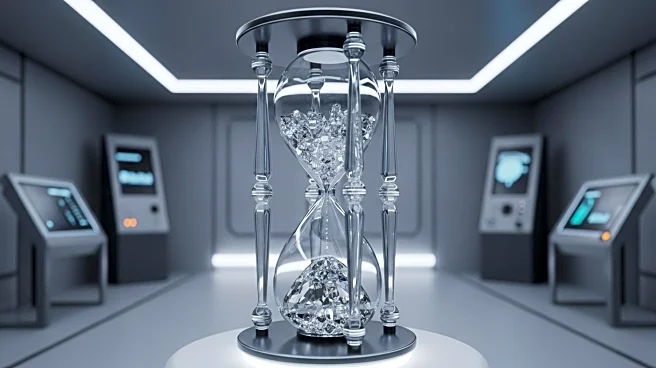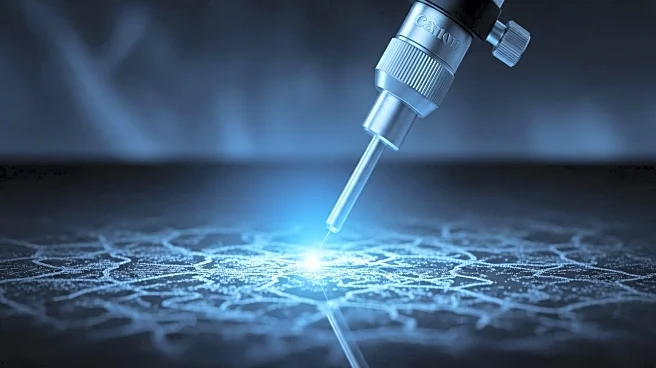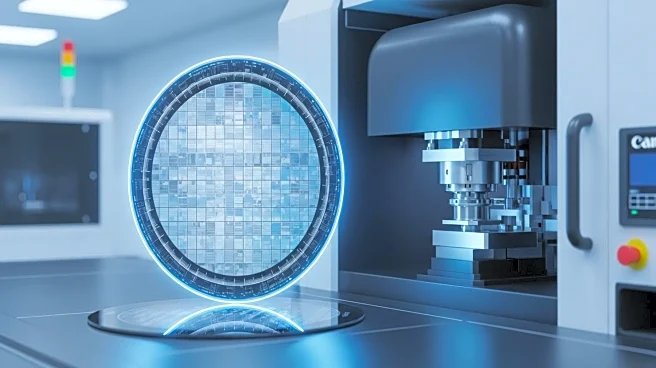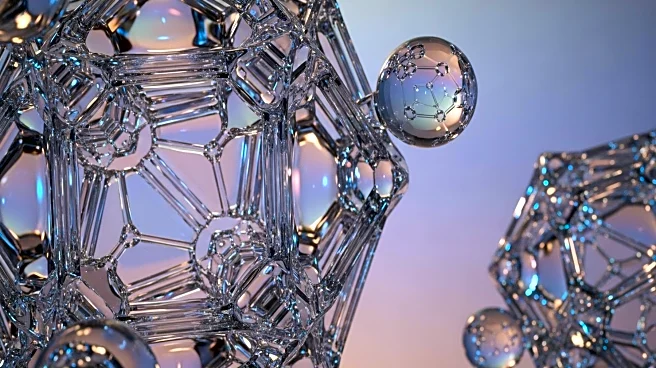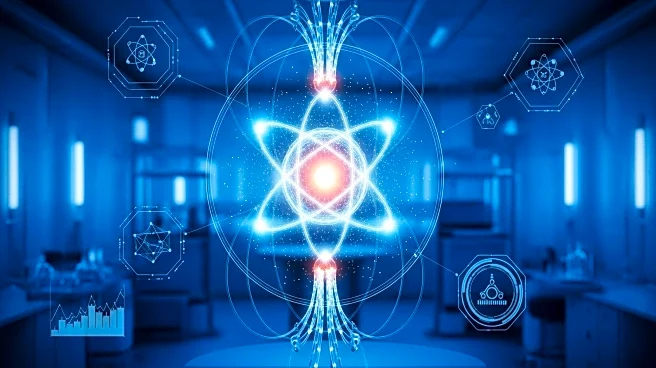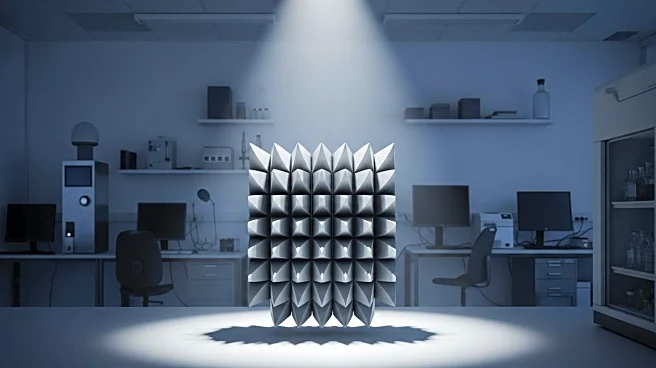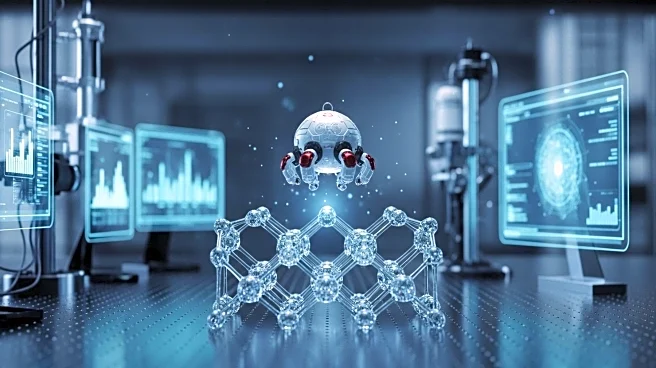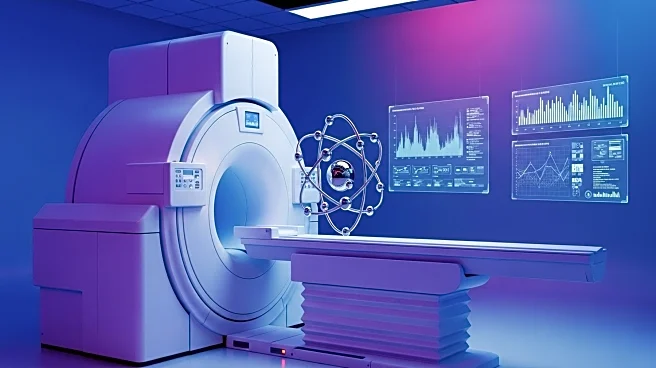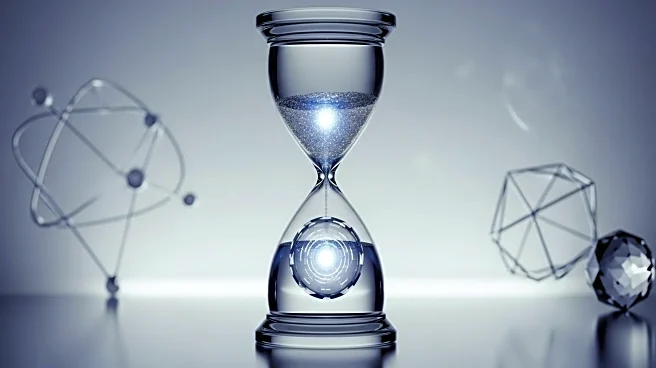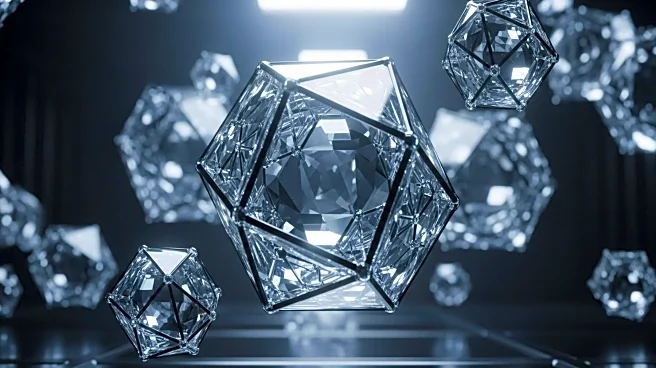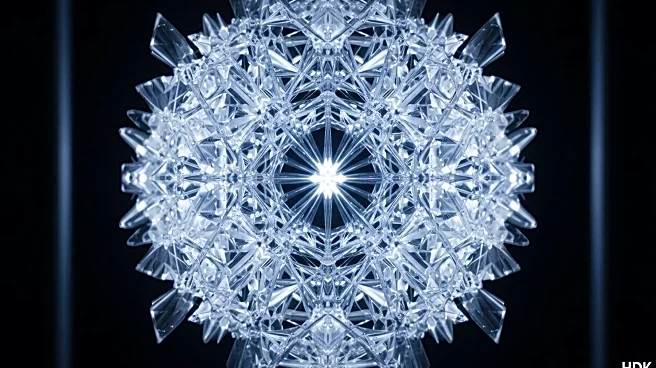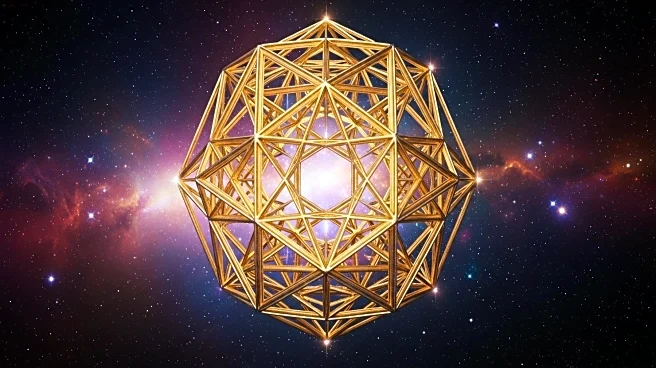What is the story about?
What's Happening?
Physicists at the University of Colorado Boulder have successfully created a new type of time crystal that is visible to the human eye. This advancement utilizes liquid crystals, similar to those found in phone displays, to form a phase of matter where particles are in constant motion. The research, led by Hanqing Zhao and Ivan Smalyukh, involves designing glass cells filled with rod-shaped liquid crystal molecules that, when exposed to light, begin to swirl and move in repeating patterns. This phenomenon is akin to a clock that operates perpetually without electricity. The study, published in Nature Materials, marks a significant step in the development of time crystals, which were first theorized by Nobel laureate Frank Wilczek in 2012.
Why It's Important?
The creation of visible time crystals opens up numerous technological possibilities. These crystals could be used in anti-counterfeiting measures, where materials added to currency could reveal unique patterns when exposed to light, ensuring authenticity. Additionally, stacking different time crystals could allow for complex pattern creation, potentially enabling engineers to store large amounts of digital data. The ability to observe these crystals directly under a microscope or even with the naked eye under certain conditions could lead to advancements in material science and quantum computing, impacting industries reliant on secure data storage and anti-counterfeiting technologies.
What's Next?
The researchers suggest that the applications of time crystals are vast and varied, with potential directions in technology yet to be fully explored. Future research may focus on enhancing the complexity and functionality of these crystals, exploring their use in data storage and security. The team is part of an international institute aiming to create artificial forms of matter, indicating ongoing collaboration and innovation in this field. As the technology develops, stakeholders in industries such as finance and data security may take interest in integrating time crystal applications into their systems.
Beyond the Headlines
The development of time crystals touches on broader themes in physics and material science, challenging traditional notions of matter and time. The ability to manipulate particles in a continuous cycle could lead to new insights into quantum mechanics and the behavior of matter at microscopic levels. Ethically, the use of such technology in anti-counterfeiting raises questions about privacy and surveillance, as well as the potential for misuse in digital data storage.
AI Generated Content
Do you find this article useful?
